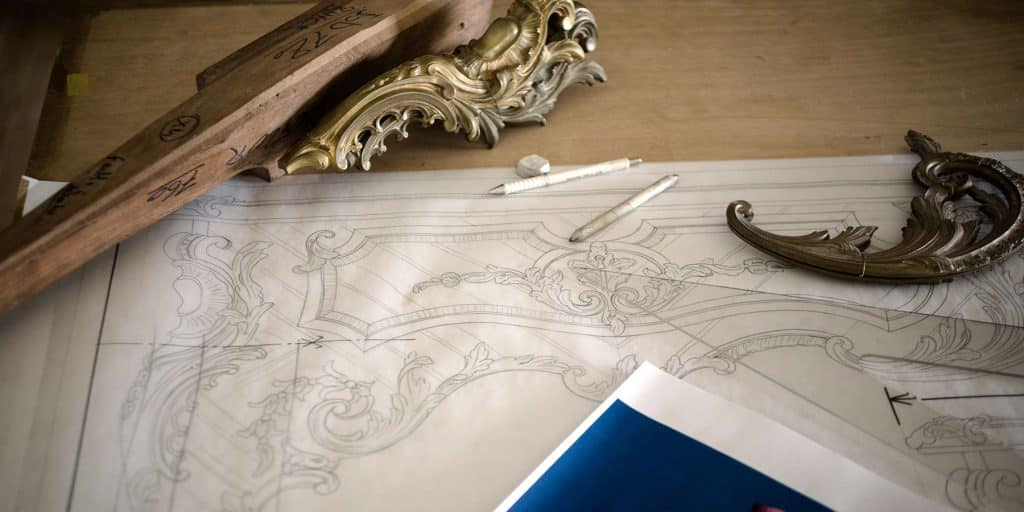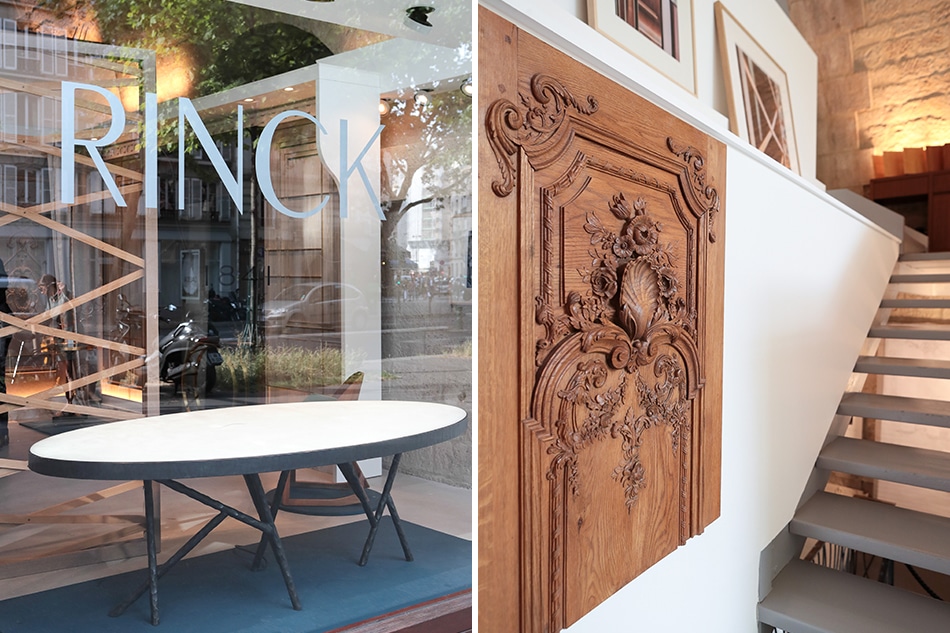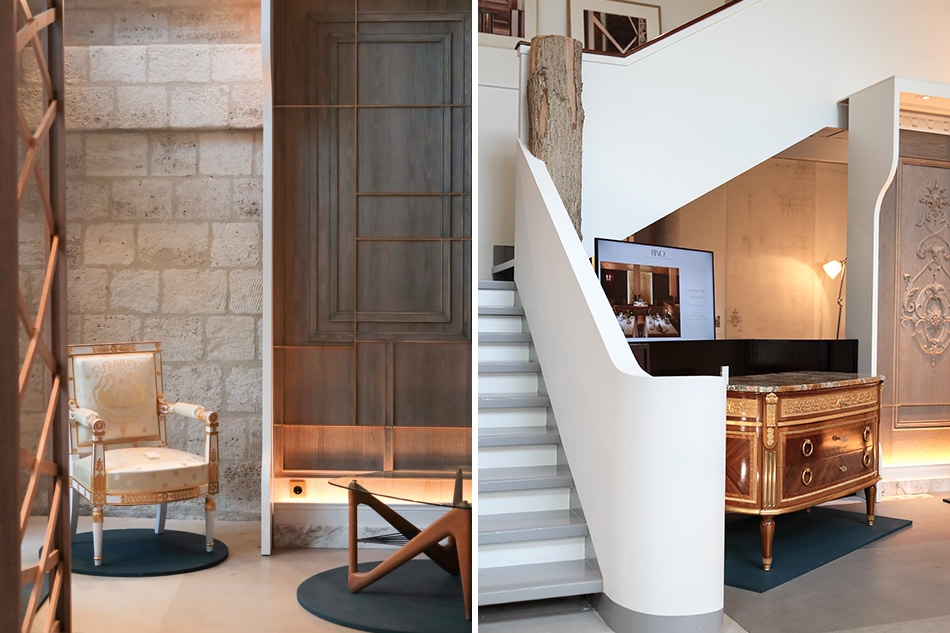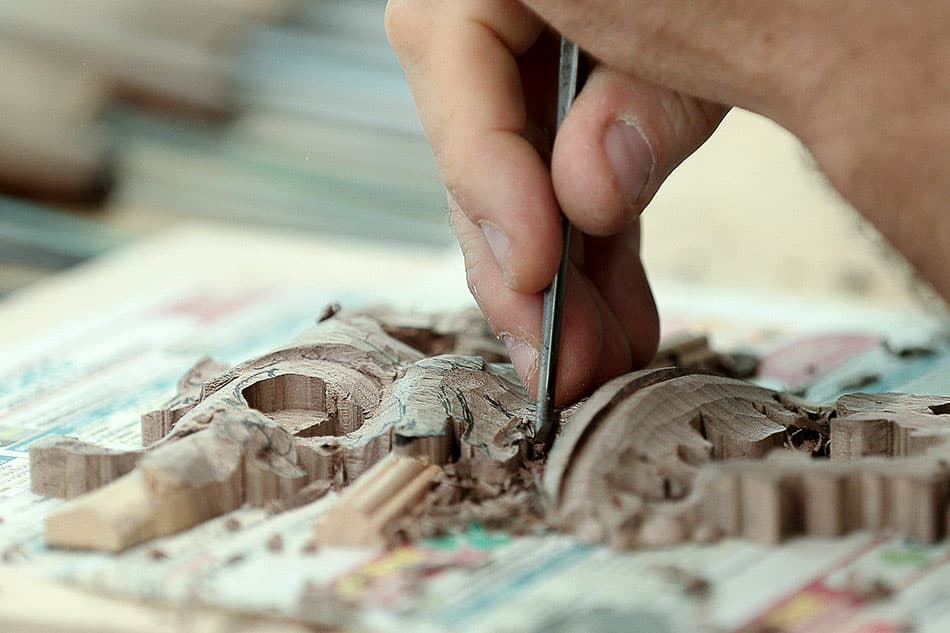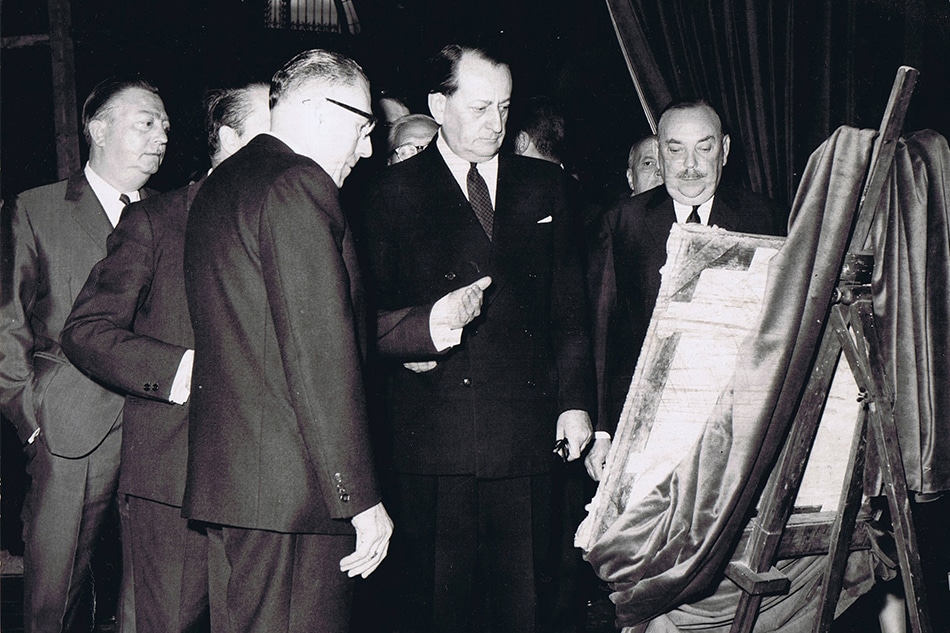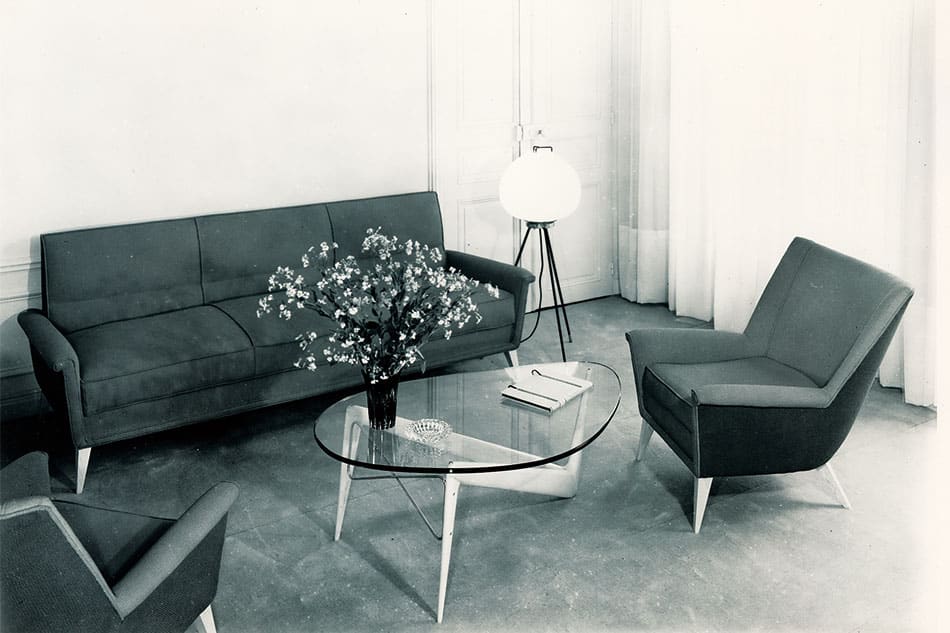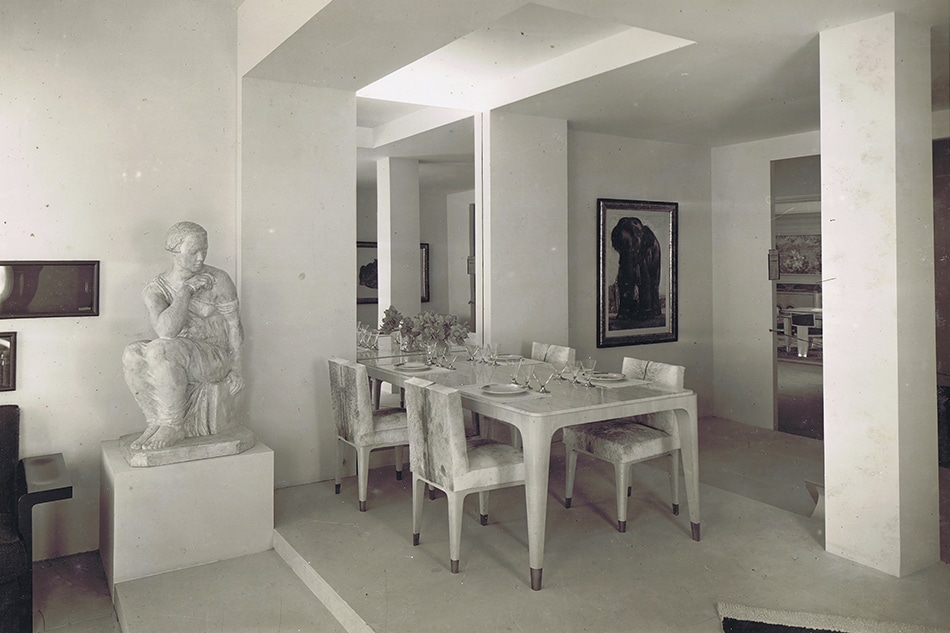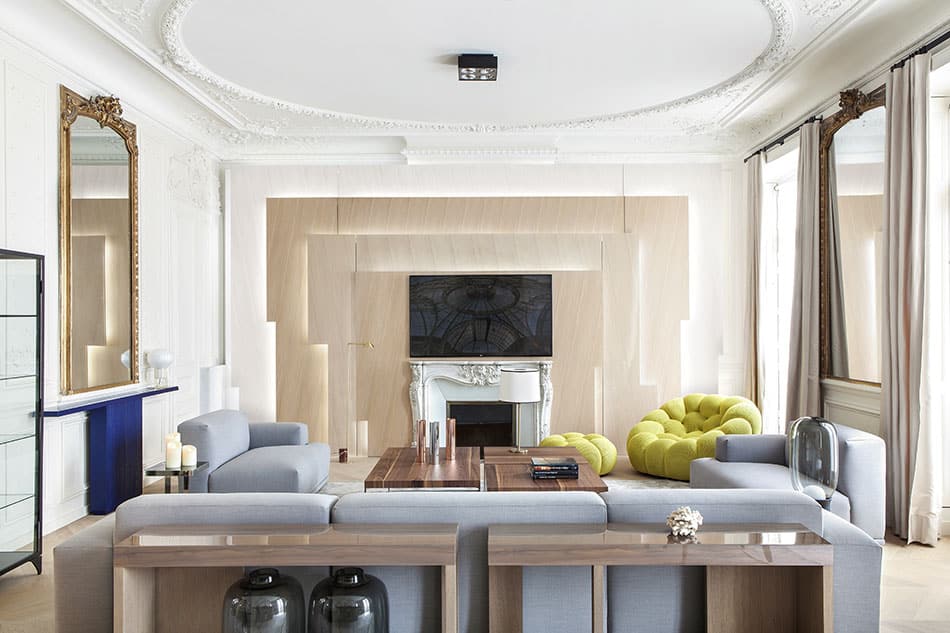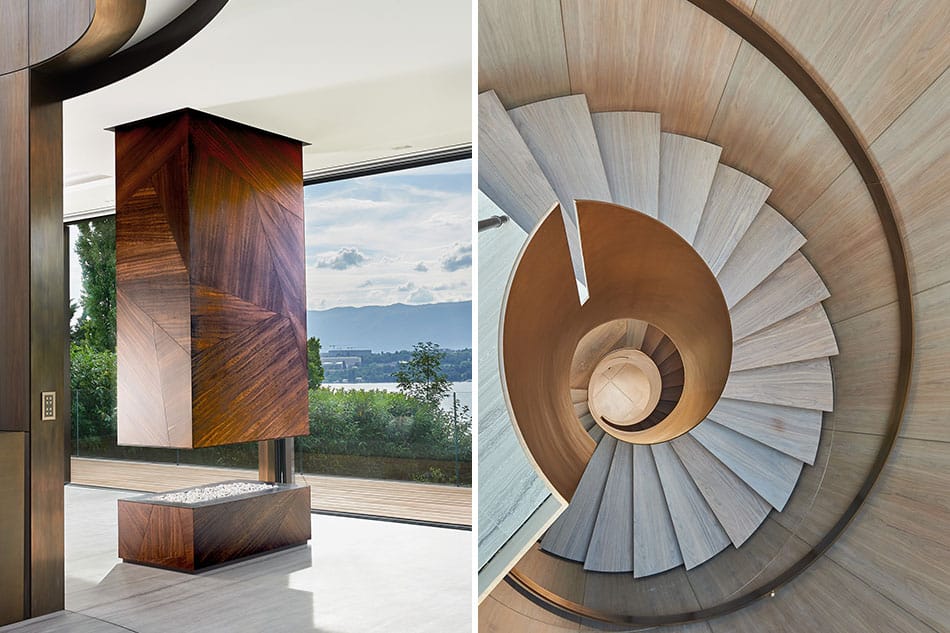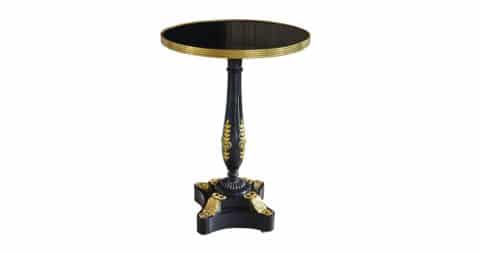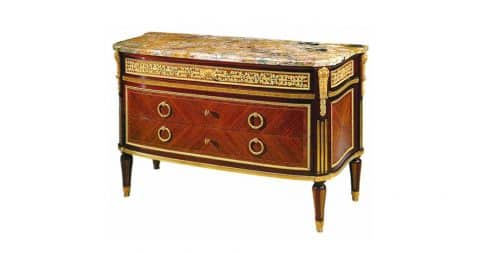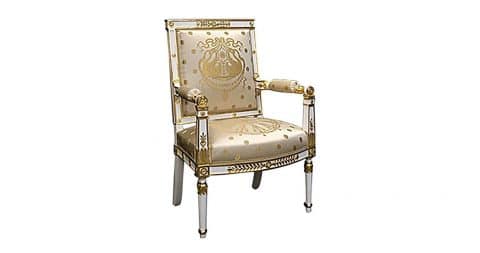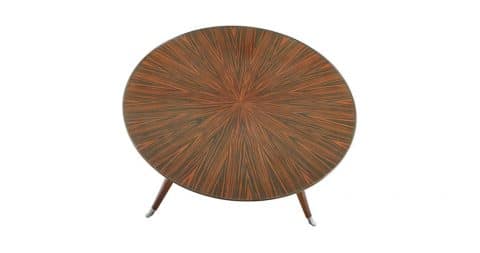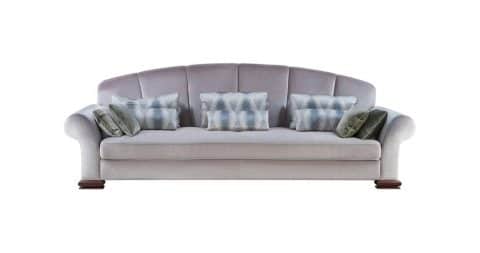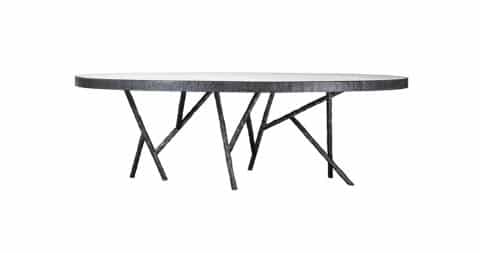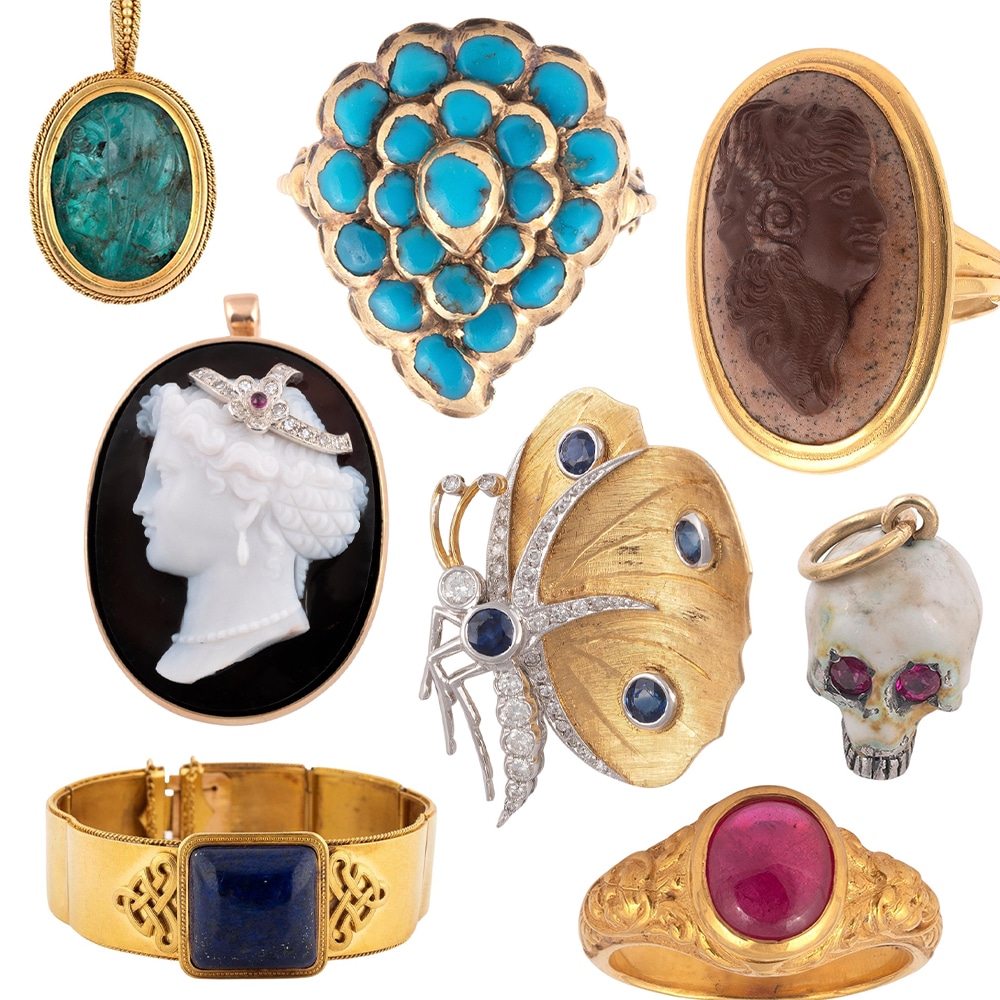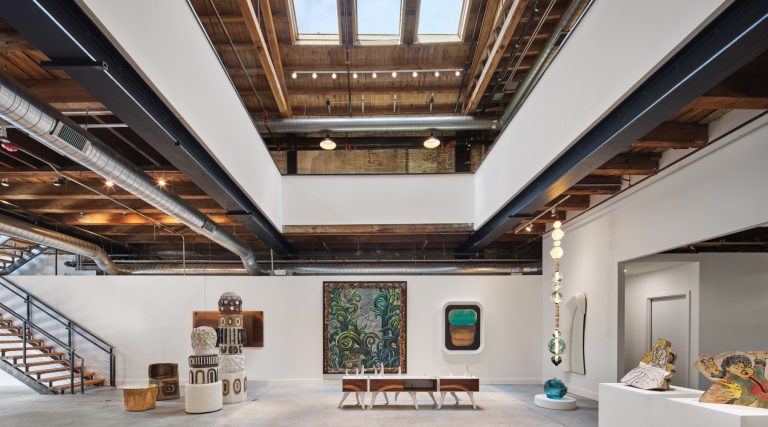
March 25, 2018Rinck CEO Thierry Goux has revived the 177-year-old company, which does both furniture and interior design (portrait by Hervé Goluza/Rinck). Top: At Rinck’s cabinetmaking workshop, a full-size drawing of the Matignon desk, along with a screenshot of the computer-engineered drawing for the base (photo by Augustin de Valence/Rinck)
A couple of years ago, the Paris-based decorative arts company Rinck received an e-mail from a Russian client. To it, she attached an image of an early 20th-century Napoleon III–style silverware cabinet that had belonged to her ancestors. “She told us it had been destroyed during the October Revolution and she dreamt of reproducing it,” recalls the firm’s CEO, Thierry Goux. It turned out that Rinck was the precisely the place for her to turn, because a look through its archives revealed that the cabinet had been made by the firm in 1905, and it still had the technical drawings.
The word multifarious could have been invented to describe Rinck, so diverse are the 177-year-old firm’s activities. It has its own interior design studio, whose recent projects have ranged from an Art Deco apartment in Paris to a 14,000-square-foot London townhouse done in a quintessential 18th-century French spirit. It also offers a collection of more than 1,000 pieces of furniture of its own design, ranging from a Renaissance-style occasional table with intricate kingwood marquetry to a thoroughly minimalist daybed with a sleek leather seat. Among its quirkier propositions are a Louis XV–style outdoor rocking chair in solid teak and an Empire-style swing. Its greatest asset, however, is its team of in-house craftsmen, whose countless skills include trompe l’œil painting; carpentry; upholstery; and bronze, parchment, shagreen and lacquer work. Their expertise is employed in creating custom commissions for designers like Peter Marino and Tony Chi, whether furniture and lighting or architectural elements such as wall paneling and staircases. Now, Rinck is branching out into another field with the opening at the end of this month of its very first hotel, housed in a 17th-century Burgundy château set on 67-acre grounds. With 40 rooms and suites, it sports a décor that conjures a homey 18th-century Scandinavian aesthetic dominated by tones of pale green and coral.

Rinck fabricated this Art Deco living room in Paris in close partnership with interior designer Frédéric Sicard. Photo by Hervé Goluza/Frederic Sicard
“What’s difficult for our foreign clients to understand is how we manage to be so specialized and versatile at the same time,” says Goux. He places the company in the tradition of great 20th-century French ensembliers — multipurpose firms that created interiors and furnishings with their own artisans. Among the most famous are Dominique, established by André Domin and Marcel Genevrière in 1922, and Maison Jansen. Another, run by André Paccard in Annecy, worked almost exclusively for King Hassan II of Morocco for 15 years and had hundreds of permanent employees. At its peak Rinck had a staff of 250 and several boutiques in Paris. Goux believes the firm has survived both the economic downturn and changing social patterns partly because of its diverse clientele, which has included Western European industrialists and even the Saudi Binladin Group.
The company was founded in Alsace in 1841 by a cabinetmaker named Jean Rinck, who transferred it to Paris after much of Alsace was annexed by the Germans during the 1871 Franco-Prussian War. The most important figure in its history was Jean’s great-grandson Maurice Rinck, who masterminded its exponential growth during the middle part of the 20th century. He obtained a gold medal for innovation at the 1937 Paris World’s Fair for a clean, almost minimalistic living room he created with the Art Deco designer Lucie Renaudot. To that, he added the Grand Prix at the 1958 Brussels World’s Fair for a salon crafted in collaboration with designer Louis Sognot, sharing the prize with Citroën and Christian Dior. One of the pieces of furniture presented on that occasion, a cocktail table with a triangular glass top, can be found today in the company’s showroom, a lofty space nestled under a former viaduct near the Gare de Lyon. There are also photos of Maurice with French postwar presidents Vincent Auriol and René Coty, as well as a 1964 letter to him from the novelist André Malraux, then serving as President Charles de Gaulle’s culture minister. “Pursue your efforts,” it reads. “I shall follow them always with great sympathy.” Today, the furniture created by Maurice is readily available on the secondary market.
After the 1973 oil crisis, Rinck went into a spiral of decline, declaring bankruptcy several times in the 1990s. When Goux acquired the firm, in 2003, it had only six employees and annual earnings of just €180,000 (less than $250,000). Having followed in the steps of his father and trained as a master cabinetmaker, Goux has more than revived the company’s prosperity in the past 15 years. Today, it tots up some €20 million in annual revenue and has a staff of 80 spread among its Paris headquarters and two workshop facilities, one in a 19th-century industrial building in Charleville-Mézières, in northeastern France, the other close to Valence, in the south. Among those employees is Goux’s son Valentin, who joined the firm five years ago and is now head of both strategy and development.

Rinck designed the interior architecture and decor for this Haussmannian private apartment in Paris, near the Grand Palais. Photo by Hervé Goluza/Rinck
According to Goux père, the majority of clients approach Rinck for its traditional know-how. “We are capable of designing and producing decors that are extremely consistent with what was done in the seventeen hundreds,” he says. The French decorating duo Patrick Gilles and Dorothée Boissier, for instance, commissioned Rinck to conceive the 18th-century-style wood paneling for the Buddakan restaurant in New York. “Its real strength is being able to delve into the past with a true knowledge of the history of styles and objects,” explains another Paris-based interior designer, Patrick Jouin.
The firm’s consummate technical prowess, however, also lends itself to innovation. Jouin recalls a fiberglass and leather desk made by Rinck that he conceived for a Japanese industrialist with a complex mechanism allowing it to rotate 360 degrees. Boissier turned to the company to fabricate enormous glass-and-metal cupboards for the main lounge in New York’s Baccarat Hotel. “We couldn’t find anyone in the States capable of manufacturing them,” she recalls. “Rinck has the ability to create extremely complex pieces that bring together very different techniques.”
One of the firm’s most long-lasting and regular clients is Philippe Starck, with whom it has worked on numerous projects, including a yacht named Wedge II and the Alain Ducasse restaurant at the Museum of Islamic Art in Doha. “We have great fun with him,” says Goux. “He’s always searching for new processes and new finishes. Each time, he takes us on a journey of discovery.” Goux makes particular mention of a stainless-steel cabinet in the bar at the Royal Monceau hotel, in Paris, into which a sophisticated system was integrated to activate the doors. “A four-year-old child could open them, despite the fact they weigh several hundred kilos,” he declares.
More recently, Goux was approached by a Saudi client to construct a 27-foot-high chandelier from bronze, alabaster, glass and brass. “She came to us because nobody else was willing to try to make it,” he says. For Rinck, however, the bigger the challenge, the better. As Jouin notes, “When you present them with a complicated project, that’s when they get excited. What interests them more than anything is being able to show off their expertise.”
Rinck Talking Points
Thierry Goux shares his thoughts on a few choice pieces
